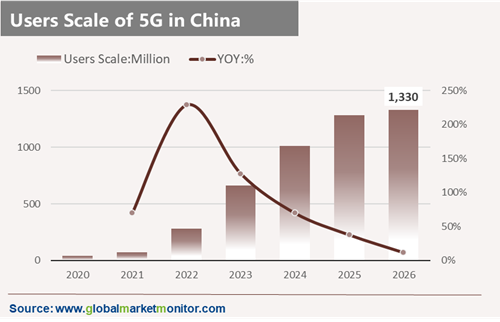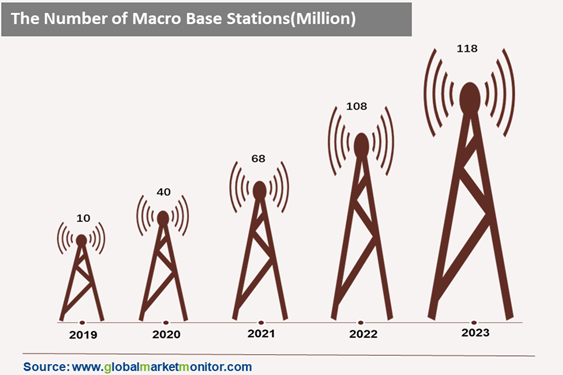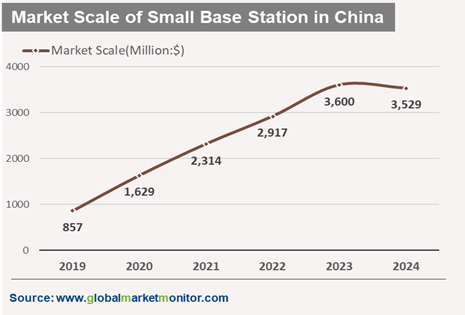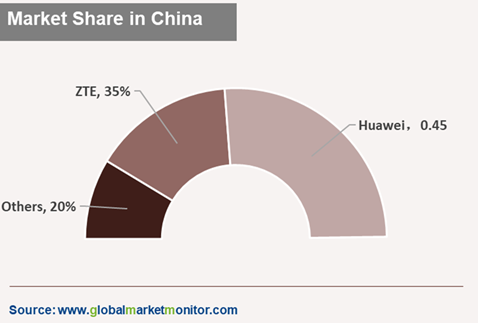The base station goes ahead before the other with the development of 5G. The construction of 5G base stations, a basis for 5G commercial signal coverage, is the first step of the 5G industrial layout.
In the city with a mature infrastructure, the layout of the 5G macro station becomes a difficult problem in terms of space and cost. Once we find an inappropriate station spot, not only it will waste high cost, but also the expected effect is not achieved, in which the small base station came into being. In a crowded area, the small base station lower small power can realize frequency multiplexing in a smaller range to improve the capacity and fill the gap of the macro station, which forms a comprehensive coverage of 5G network. If lacking the small base station, the 5G network is just an empty skeleton without blood vessels, invalidly. 5G base station consists of a small base station and macro base station. A small base station, which can be divided into microcell, picocell, and femtocell, is a contrary concept of Macro base station.
An Encouraging Policy Environment
There has been a great policy environment for 5G network development. On March 16, 2016, the relevant policy outline proposed to promote actively the research on the key technologies of 5G and start the 5G commercial application. On June 6, 2019, MIIT issued a business license of basic telecommunication to CMCC, CTCC, and CUCC and SARFT to approve them to operate 5G business. On March 24, 2020, MIIT issued the notice on promoting the accelerated development of 5g, which clearly stated that we should make every effort to promote 5G network construction, application promotion, and technology development, and safety assurance, aim at performing scale benefit and driving role of 5G new infrastructure to support high-quality economic development.
Driven by the 5G Development
It is estimated that the 5G users scale will reach 1.28 billion with a penetration rate of 90 percent in the next five years. Once the 5G scale expands, the base station will take the lead in development and become increasingly intensive. If the base stations continue to be built traditionally, the higher and higher cost of base station construction may seriously drag down the 5g deployment progress. Traditional base station design covers a large area, which not only affects the urban appearance, but also makes people worry about the load-bearing and wind load. Besides, its function is provided incompletely, resulting in repeated resource waste. Relevant documents require that basic telecommunication enterprises are supposed to make full use of social tower resources such as street lights, monitoring, and traffic instructions to give full play to their advantages and carry out the construction of small base stations under the principle of marketization.

As an Essential Supplement of the Macro Station
The base station, as the foundation of network construction, is driven by the large-scale construction of 5G. At present, the industry has reached a consensus that the number of 5G micro base stations will be more than 1.5 times that of 4G base stations with more than 2 times that of 5G micro base stations for 5G small stations. At the end of 2017, the number of 4G base stations was 5.58 million, accounting for half of the whole scale in the world. In 2020, 5g will enter a large-scale construction cycle. By May 11, 2020, there are 198000 5g base stations in China, with more than 50 million package users. 5G scale is far larger than that in other countries in the world.

With Huge Market Scale
The small base station will enter an accelerated stage with a CAGR of 117% in the next 5 years, whose scale is about to show a geometric growth. The huge market carried by the small base stations attracts enterprises in the industrial chain to take part in the product development and design. According to incomplete statistics, there are more than 20 manufacturers that are studying small base stations in the world, including Huawei, ZTE, Intel, Ericsson, and others.

Huawei and ZTE Play the Leading Role
Although ZTE and Huawei in China have not kept up with the international development in the 3G era, they pay more attention to the layout of small base stations in the 4G and 5G era. At present, Huawei recently launched 5G LampSite, which has created the industry's highest indoor coverage rate in the test record. At present, Huawei can provide distributed wireless systems from femtocell to picocell to LampSite, among which LampSite 3.0 can support four operators at the same time. ZTE first issued the small base station integration of 4G and the coverage solution of Qcell in 2014, which has been implemented in Jiangsu, Inner Mongolia, and Hunan, and other provinces. From the perspective of the development process, the gap, between domestic small base stations and developed markets in Europe and the United States in terms of technology and application, is gradually eliminated. And the domestic market of the small base station is expected to be promoted rapidly in the future by the three major operators.

We provide more professional and intelligent market reports to complement your business decisions.